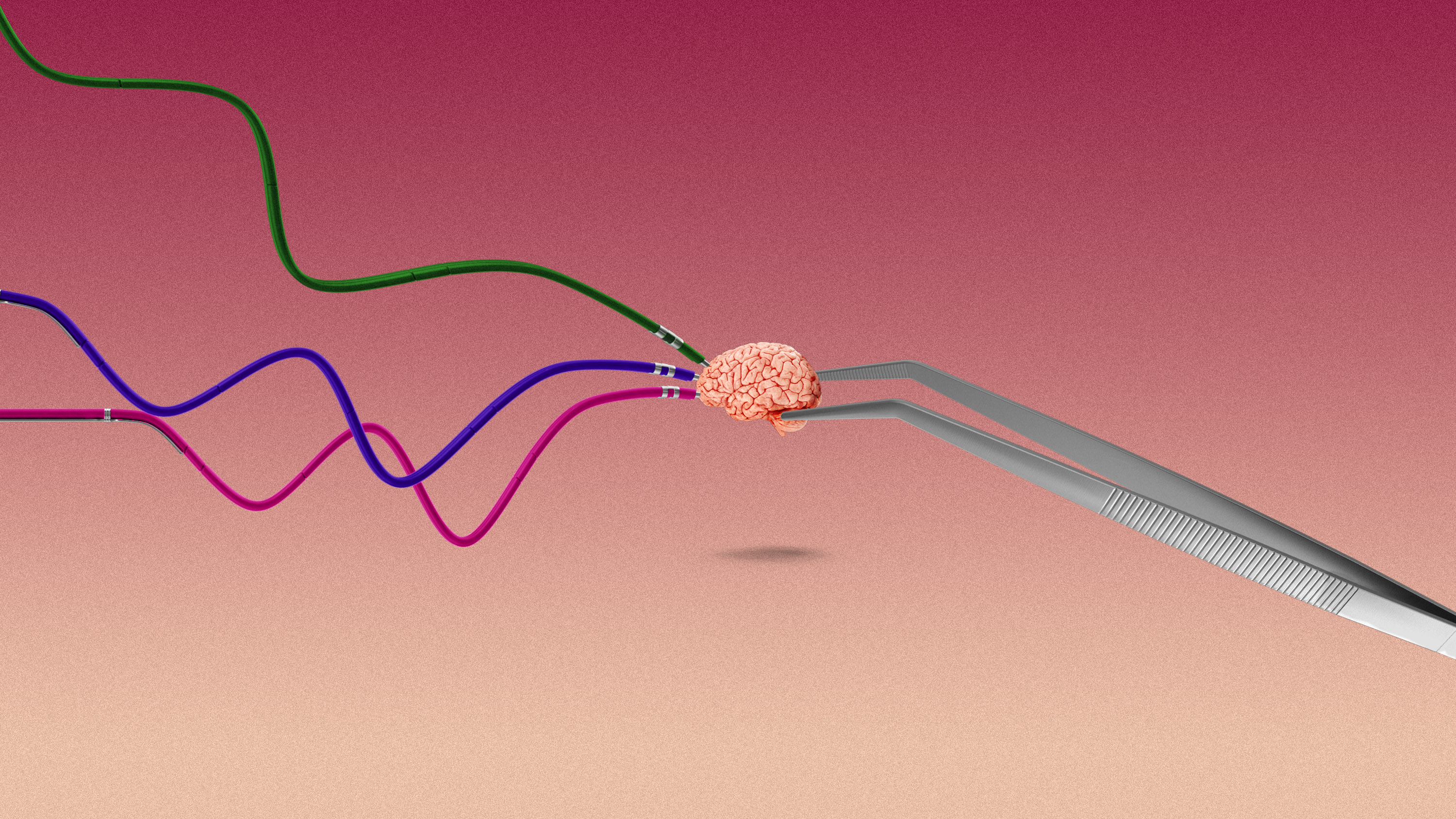Tiny caps can measure activity in lab-grown minibrains
The miniature devices, inspired by EEG electrode caps, could give scientists new insights into how chemicals and drugs affect the human brain.

Minuscule lab-grown models of human brains can be fitted with caps that measure their activity, just as electroencephalogram (EEG) caps record electrical signals produced by full-size human brains.
The minibrains are examples of organoids—three-dimensional clusters of living cells, grown in a lab, that simulate the structure and function of human organs so that researchers can observe how they develop. Researchers often genetically modify them with viruses or exposure to chemicals to study how they change in comparison to unaltered organoids.
Until now, scientists haven’t been able to study brain organoids beyond just a few cells. While the organoids are spherical, the conventional tools to study them—microelectrode array plates, which contain electrodes to measure electrical activity—are flat.
This new microcap, created by a team from Johns Hopkins University, can wrap around a brain organoid, allowing researchers to take 3D recordings from its entire surface. This more detailed information could help us better understand how the brain works. One use would be to monitor how neurons communicate during drug testing.
The microcaps, described in a paper published in Science Advances today, are soft, flexible, transparent polymer shells that contain gold wires and contact pads. When placed in a cell medium, the microcap began to swell and close around the organoid, which was half a millimeter in size.
As well as helping researchers monitor the organoids, the technique could present a cheaper, more ethical alternative to animal testing to ensure that chemicals are safe for humans and don’t cause brain development issues, says David Gracias, a Johns Hopkins chemical and biomolecular engineer and one of the study’s authors.
“A lot of chemicals are implicated in diseases of the brain, but there’s no easy way to screen them,” he says. “Screening for one chemical can cost upwards of a million dollars because of the cost of animals, and the ethical concerns are also there.”
The process, which was inspired by microchips, could create caps that can be customized to fit loosely or more tightly around organoids of various sizes, meaning they could measure electrical activity in organoids at different stages of development.
Having proved that the cap works for one organoid, the team is planning to scale up the experiment, making an assembly line of 100 organoids to run tests in parallel. These could be hooked up to microchips or other organoids in the future. Their colleagues in brain sciences could also use the connected organoids to screen drugs and potential therapies for autism, Alzheimer’s, Parkinson’s and other brain conditions.
“Many people believe that the brain is the ultimate frontier that we have not understood,” says Gracias. “We’ve been thinking of connecting them to computers, and to each other—if you can make one minibrain, it’s possible you can connect it to another one. It’s very exciting.”
Deep Dive
Biotechnology and health
How scientists traced a mysterious covid case back to six toilets
When wastewater surveillance turns into a hunt for a single infected individual, the ethics get tricky.
An AI-driven “factory of drugs” claims to have hit a big milestone
Insilico is part of a wave of companies betting on AI as the "next amazing revolution" in biology
The quest to legitimize longevity medicine
Longevity clinics offer a mix of services that largely cater to the wealthy. Now there’s a push to establish their work as a credible medical field.
There is a new most expensive drug in the world. Price tag: $4.25 million
But will the latest gene therapy suffer the curse of the costliest drug?
Stay connected
Get the latest updates from
MIT Technology Review
Discover special offers, top stories, upcoming events, and more.